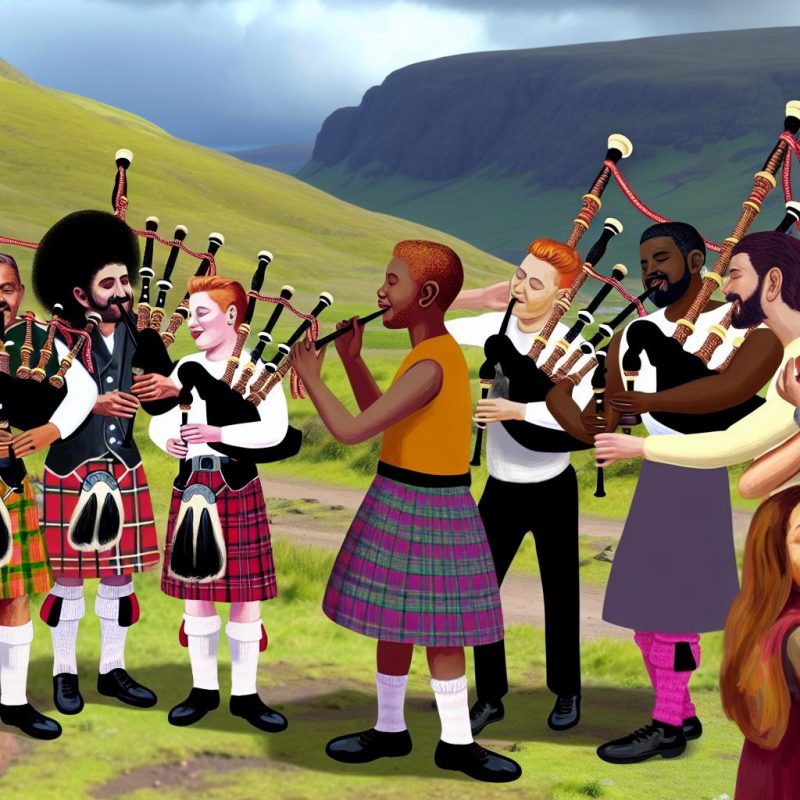The Historical Significance of Bagpipes in Argyll
Argyll, a region embedded deeply in Scottish traditions, resonates profoundly with the unique and pleasing sounds of the bagpipes. These ancient instruments occupy a crucial position in the cultural fabric of Argyll, both in terms of their historical development and their enduring presence in the contemporary era. The history of bagpipes in Scotland can be traced back to the early Middle Ages, and over time, they have become a powerful emblem of Scottish identity.
The Bagpipe Tradition in Argyll
Bagpipes have been instrumental in shaping the musical traditions of Argyll. They have been pivotal in various ceremonies and events throughout history. Originally, bagpipes served on the battleground, where they were essential for communication over large distances. In today’s context, bagpipes continue to play a significant role in various cultural gatherings and formal occasions, such as Highland Games, weddings, and funerals.
Piping Competitions and Gatherings
Argyll serves as a hub for numerous piping competitions, attracting participants from around the world. These events not only highlight the skill and artistry of individual pipers but also help to sustain the music traditions specific to this region. The Argyllshire Gathering is a notable example of such events, providing a platform for the best Scottish piping talent. This gathering is a vital celebration that reflects the global admiration for Scottish culture and music. Those keen to learn more about these events can visit the Argyllshire Gathering website.
The Instruction and Evolution of Bagpiping
In Argyll, the tradition of learning and teaching the bagpipes continues robustly through a network of schools and community organizations. This concerted effort ensures that the bagpipe tradition evolves with time, without losing its essence. For many residents of Argyll, learning to play bagpipes is perceived as a rite of passage. It serves as a conduit for connecting with the past and preserving their cultural identity.
Creation and Craftsmanship
The making of bagpipes is yet another dimension of their cultural importance in Argyll. Local artisans often employ age-old methods to create these instruments, ensuring that the sound quality and integrity remain intact amid modern influences. The focus on quality craftsmanship ensures that each set of bagpipes is uniquely crafted, carrying with it a slice of Argyll’s rich heritage. This attention to detail ensures that the instruments not only function well but also serve as a testament to Argyll’s enduring cultural legacy.
Cultural Preservation
Bagpipes are central to numerous cultural preservation initiatives throughout Argyll. Various institutions and organizations within the region are actively engaged in projects aimed at educating the younger generations about traditional music. This includes integrating bagpiping into school curriculums and offering scholarships to promising young musicians. These programs foster a new generation of pipers who not only appreciate the historical significance of the instrument but also contribute to its evolving tradition.
Conclusion
The unwavering prominence of bagpipes in Argyll highlights their role as a cultural and historical cornerstone. As a symbol of Scottish identity and regional pride, the resonating sound of the bagpipes evokes a profound connection to the past. At the same time, they ensure that Argyll’s rich musical heritage continues to be celebrated. For individuals who have an interest in delving deeper into this rich tradition, visiting a local museum or heritage center in Argyll can offer more extensive insights into the historical context and significance of this iconic instrument. Whether through competitions, craftsmanship, or educational programs, the bagpipes remain a vital and vibrant part of Argyll’s identity, echoing the stories and traditions of past generations while fostering a sense of community and continuity within the modern world.

